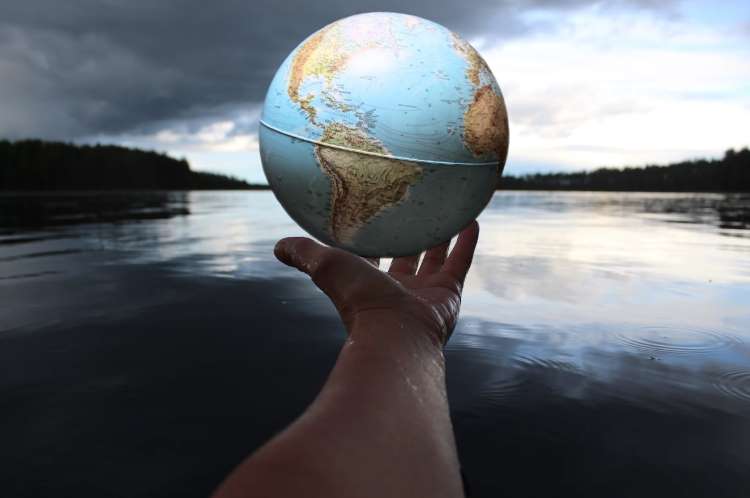
Biocredits as a funding option: There is a popular Sanskrit saying that states, “Prakriti Rakshati Rakshita,” which translates to “nature protects, if it is protected.” However, our actions towards protecting nature have not been consistent or coherent. Anthropogenic activities without a holistic approach have caused significant harm to the environment. In the last century alone, we have lost 35% of mangroves, 40% of forests, and 50% of wetlands.
The ecosystem is a dynamic complex of plant, animal, and microorganism communities, and their non-living environment. It is understood that the benefits provided by this ecosystem, known as ecosystem services, are declining. The impact on the ecosystem is moving the world towards irreversible loss, which will also affect human survival. In the last fifty years, we have degraded 60% of ecosystem services. (Gantioler et al. 2009)
READ I Climate finance: Need fresh approaches to expand lending capacity
All three components of biodiversity, genes, species, and ecosystems, strongly influence ecosystem services through their functional and structural variability, and the loss of biodiversity significantly impacts ecosystem services. The decline in biodiversity is driven by increasing human population and consumption. The impacts of biodiversity loss and ecosystem degradation have broad and systemic implications connected to many of the most pressing challenges that humanity faces today, such as food security, water scarcity, and climate change. (Sharman 2013)
The World Economic Forum (WEF) estimates that the funding required to halt biodiversity loss ranges between $722 billion and $967 billion per year. However, in 2019, the total global flow of funds towards biodiversity protection amounted to approximately 124-143 billion USD annually. (Khatri, Kemp, and Valentini 2022)
This issue was deliberated in COP15 and finds its place in target number 14,15 and 19 of the Global Biodiversity Framework adopted by nearly 200 nations. This includes a commitment to scaling up as well as aligning public and private funds. Goal D of the Kunming-Montreal Global Biodiversity Framework also highlights the need to close the biodiversity gap of 700 billion USD per year. Finding an instrument to address this gap has always been on the agenda of stakeholders. (Joly 2022)
Biocredits as solution
Biodiversity Credits (biocredits) are being promoted as the economic instrument that can be used to finance biodiversity-enhancing actions through the creation and sale of biodiversity units. The revenues from biocredit sales would promote conservation by financing equitable, benefit-sharing mechanisms in low and middle-income tropical countries, which are biodiversity hotspots and better in comparison to other countries. (Porras and Steele 2020)
Biocredits are similar to carbon credits, starting with baselining in terms of the existing status and then moving positively with pre-decided actions for its betterment in terms of species, diversity, and habitat. After verification of the claim, an independent body certifies credits to the project developer. These certified credits can be sold in the market or can find buyers with direct deals. Transparency and credibility are prerequisites for such transactions, and hence an official register to track progress compared to defined standards would help in monitoring and ownership.
In line with carbon offsets, biocredits could also be aggregated, which may help in scaling the actions and deciding the threshold investments for conservation and benefit sharing. Different time horizons from five years or ten years or thirty years or a lifetime can be decided based on the location and agreement with the project developer. Biocredits are being applied broadly in three ways: to avoid biodiversity loss for areas under threat, measure improvement in ecosystem services and landscape enhancement, or reward the status quo of virgin sites.
Biocredits, unlike carbon credits, do not have a single unit of measurement that can be traded, and it depends on location and related biodiversity. Furthermore, community is an important stakeholder for the success of biocredits, making it different from carbon credit which is mostly technical from a business perspective. (Mcdonnell 2022)
Biodiversity offsets and biocredit are not similar. Biodiversity offsetting is a legal requirement to compensate for biodiversity impacts likely to be made by an economic project, while biocredits are voluntary and represent a positive investment in biodiversity. Unlike offsets, biocredits are not based on the principle of equivalency. Biodiversity offsets have been criticised for not being able to protect the environment, not being enforced and not being monitored, and could have been used as a cheap way to ‘offset’ the destruction of biodiversity and habitats elsewhere whereas biocredits are positive investments. (Reid and Nsoh 2016)
With technology significantly impacting all aspects of business and development, biocredits can enable cost-effective solutions through the use of remote sensing, bioacoustics, Artificial Intelligence (AI), Blockchain approaches for registry accounting systems, and revenue distribution to pre-agreed stakeholders. Biocredits can serve the cause of biodiversity and provide business opportunities to startups, skilling institutions, and entrepreneurs. (Ducros and Steele 2022)
Although biocredits are relatively new in terms of actual practices, some initiatives have been taken to test biocredits in different countries such as New Zealand, Colombia, and Australia. For instance, New Zealand launched biocredit products in July 2022, known as “sustainable development units,” for funding the conservation of 83 hectares at Maungatautari Sanctuary Mountain.
Colombia introduced its new biocredits, namely “Voluntary Biodiversity Credits” (VBCs), in May 2022, priced at $30 for 30 years of conservation and/or restoration of 10-meter squares of the Bosque de Niebla Forest. Australia introduced biocredits in 2018 known as EcoAustralia units, with each unit representing 1.5 square meters of habitat protection, such as the Mount Sandy project that protects a rare pocket of native vegetation in South Australia’s Coorong region under the care of the Ngarrindjeri people.
Recently, the Australian Government introduced the Nature Repair Market Bill 2023 (Cth) and Nature Repair Market (Consequential Amendments) Bill 2023 (Cth) into Federal Parliament, establishing a framework for a voluntary nature repair market (Biodiversity Market) to promote private sector investment in improving biodiversity with a benefit-sharing mechanism. (Louise Camenzuli and Anna White 2023)
There are many emerging schemes of biocredits like Terrasos, ValueNature, and Wallacea Trust.
- Terrasos, a Colombian company, created a voluntary biodiversity credit (VBC) which connotes positive contributions to biodiversity in an area of at least 10m2, within a preserved and/or restored ecosystem, that is managed technically, financially, and legally, for at least 20 years, achieving measurable results in terms of biodiversity.
- ValueNature in Africa is a startup company, and one ValueNature biodiversity credit (VNBC) represents one hectare of land with biodiversity protected from degradation for 10 years, with a minimum total permanence period of 30 years.
- Wallacea Trust in Central and South America defines a unit of biodiversity as a 1% increase or avoided loss in the median value of a basket of metrics (per hectare), and biocredits can be validated and verified by a third-party certification body, who issues the credits upon successful review. The biocredit is defined as a 1% restoration or avoided loss per hectare in the median value of the basket of metrics.
We all know that for biodiversity, the whole is much more than the sum of its parts. If biocredits can contribute to mitigating the risk of any part, it will be a welcome step. However, biocredit units need to be linked to a specific geographic location suitable for monitoring, be valid for a specific time period, be measurable against an established baseline, be suitable for collective aggregation to provide an overall indicator of the condition of biodiversity, and be comparable over space and time.
Biocredits also need to address transparency, benefit sharing with the community, a unified approach, market structure, and flows of finance. They must be monitored closely; otherwise, there is a risk that biocredits will start to subserve biodiversity offsets and lose their very purpose.
With Target 2 of the Kunming Montreal Global Biodiversity Framework, which aims to ensure that at least 30% of the area is under effective restoration for enhancing biodiversity and ecosystem services, state and central governments can implement a biocredits scheme customized to our geographies with transparency, credibility, benefit sharing, and monitoring mechanisms, with adequate infusion of technology.
(Pankaj Satija is the Managing Director of Tata Steel Mining Ltd. The views expressed in this article are of the author and not necessarily those of the company he is associated with.)
The author is Executive Incharge, Ferro Alloys and Minerals Division, Tata Steel Ltd. The views expressed in this article are of the author and not necessarily those of the company he is associated with.


